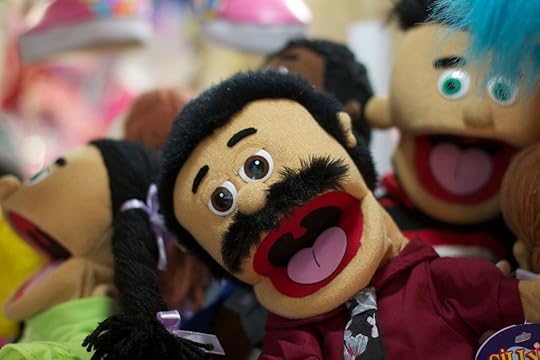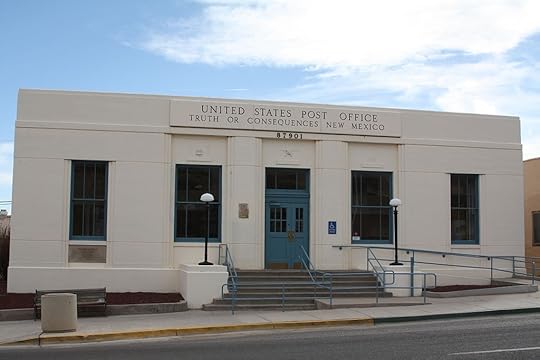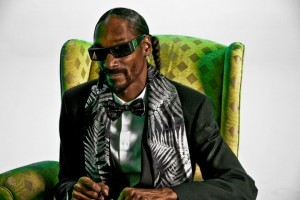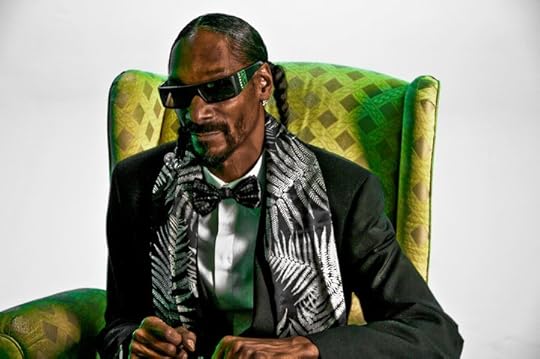Bathroom Readers' Institute's Blog, page 62
April 27, 2017
This Video Game is Cursed!

Video games have been a part of the culture now for more than 30 years. That means they’re old and established enough to have their own spooky myths and horror stories.

Berzerk
The story: In the 1980 arcade video game Berzerk, players traveled through a maze and had to use a laser to kill robots before the robots killed them. In 1981, a 19-year-old man named Jeff Dailey compiled the highest score possible in the game: 16,660. In 1982, an 18-year-old named Peter Burkowski played two very good games of Berzerk in a row, landing in the top 10 “high scores” chart on his arcade’s model. What’s the connection between Dailey and Burkowski? Just after they both made their high scores, they both died instantly of a heart attack. The reason? Beating the game carried a cursed—after all, take the “1” and “0” off the score, and you’re left with the number “666.”
The truth: The death of Dailey hasn’t been widely corroborated, but Burkowksi’s has—he sadly died in April 1982 at Friar Tuck’s Game Room in Calumet City, Illinois, immediately after he finished playing Berzerk.
Killswitch
The story: In 1989, a Soviet software publisher called Karvina Corporation made a prototype of a dark, horror-themed game for home computers called Killswitch. Players had to escape a creepy, monster-infested coal mine, and could play as either a little girl or a demon. The prize for beating the game: The screen goes white, and the game deleted itself, never to be played again. Supposedly only 5,000 copies were produced, and Karvina released a statement saying that, “like reality,” the game was “unrepeatable, unretrievable, and illogical. One might even say ineffable. Death is final; death is complete.” The only evidence the game existed is that in the mid-2000s, a Japanese man named Yamamoto Ryiuchi bought a mint-condition copy of Killswitch at an auction for $733,000. He planned to videotape himself playing the game, and upload the footage to the Internet. The only video he uploaded: one of himself, weeping.
The truth: Killswitch is probably not a real game, because not only have there been no credible accounts for people who actually played it, but there’s no evidence that it ever existed. The software on a computer disk may have deleted itself, but the physical disk would have still been around. Additionally, there’s no record of a company called Karvina ever operating in the Soviet Union. The story of Yamamoto Ryuichi and his sobbing video is also fictional.
Fallout 3
The story: In exploring the immersive world of the 2008 video game Fallout 3, players can use a radio to pick up Morse code transmissions. Once translated, they seem to be predictions of future events. For example, the Morse code says that Diff’rent Strokes actor Gary Coleman will die in 2010.
The truth: The game did predict that Coleman would die in 2010…and he actually did. Its other predictions might be a little off-base. It said Queen Elizabeth II would die in 2014, and that Britney Spears would win an Academy Award in 2023. As of 2017, the Queen is still alive…and Spears has six years to work on her acting chops.
The post This Video Game is Cursed! appeared first on Trivia Books and Facts | Uncle John's Bathroom Reader.
April 18, 2017
The Stanley Cup of Strange

The NHL playoffs are about to get underway. And to celebrate the excitement, here are some of the weirdest things that ever went down on the ice during the post-season quest for the Stanley Cup.
2010: Game 6
In 2010, the Chicago Blackhawks won their first Stanley Cup since 1961…but not too many people realized that at first. In overtime of Game 6, Patrick Kane snuck the puck past the Philadelphia Flyers’ goalie. Kane started to celebrate his team’s championship, but he was the only one: The puck had disappeared, and nobody was quite sure where it had gone. Some quick investigation, along with instant replay technology, revealed that it had gotten stuck beneath the padding in the back of the net. But it was a fair goal. Once it was found, then the rest of the Blackhawks were excited.
1975: Game 3
Somehow, Game 3 of the 1975 Stanley Cup Finals took place in May, and not on Halloween. But it might as well have been that holiday for all the spooky stuff that happened. It was unseasonably warm in Buffalo that year as the Sabres hosted the Philadelphia Flyers. That environmental heat and humidity, along with the team’s arena not having air conditioning meant that the game was played through heavy fog—yes, indoor fog. During timeouts, arena employees tried to fan the fog away by waving around bedsheets. During the same game, a bat made its way into the arena. Rather than hang out in the rafters, it explored the ice…where Sabre center Jim Lorentz reached knocked it out of the air with stick, and, shockingly, killed it.
1988
Bizarrely, fog would complicate the Stanley Cup Finals again in 1988. The Boston Bruins hosted the Edmonton Oilers…as well as a thick blanket of indoor fog. It was hard for players to see, and it got even harder for them to see when a power failure made all the arena’s lights go out. The game was postponed.
1920s
Back in the 1920s, NHL teams weren’t quite yet multi-million-dollar franchises stocked with world-class players, and backups for world class players. It was still a small, struggling league of six teams in the eastern U.S. and Canada, and teams had to get by with what they had. Take for example the 1928 Stanley Cup Finals. New York Rangers goalie Lorne Chabot was too injured to suit up for Game 2. So, taking his place in front of the net: Lester Patrick, head coach of the New York Rangers. The Rangers won the game and the Stanley Cup.
The post The Stanley Cup of Strange appeared first on Trivia Books and Facts | Uncle John's Bathroom Reader.
5 Inclusive Muppets

For nearly 40 years, Sesame Street has helped kids learn about the world around them, and themselves. To that end, the series has routinely introduced Muppet characters that reflected the big, diverse world out there.

Aristotle
Sporadically throughout the 1980s, Sesame Street’s resident worrywart Telly hung out with a friend named Aristotle. He was blind, and in a few segments demonstrated to kids what life might be like for a blind person. One time, he helped human character David make baloney sandwiches (with David helping him find the necessary objects). On another episode, he reads “Little Red Riding Hood” to Big Bird out of a book printed in Braille.
Julia
In 2017, Julia became the latest Muppet to take residence on Sesame Street. She’s the first character on the show to be on the autism spectrum. (Muppeteer Stacy Gordon operates the puppet, and helped form Julia’s personality from observation of her son, who also has been diagnosed with autism.)
Alex
Millions of children have an incarcerated parent, and Sesame Street producers recognized that that must be a difficult situation. So, to help kids cope and process, they introduced Alex in 2013 in a special educational video called Little Children, Big Challenges: Incarceration. Alex at first doesn’t feel like playing with the other kids and Muppets because he’s so sad that his father is in jail, only to have an older kid tell him that he’s not alone, because she went through the same experience.
Abby Cadaby
This super-excited, magic-wand waving Muppet has been part of the regular cast of Sesame Street for more than a decade, but in 2012 she starred in a special Sesame Street video aimed at kids whose parents were going through a divorce. After Abby draws a picture of her house—or two houses, rather—she reveals that her parents are splitting up, and are living separately.
Kami
This Muppet was introduced on Takalani Sesame, the South African edition of Sesame Street, in 2002. The aim of Kami: to help kids learn about HIV and AIDS, and to lessen the stigma associated with it. Kami’s backstory: She received a blood transfusion as a baby, and it was unknowingly tainted with the virus.
The post 5 Inclusive Muppets appeared first on Trivia Books and Facts | Uncle John's Bathroom Reader.
April 17, 2017
The Most Taxed Places on Earth

Today is a painful day—the day when federal income taxes are due in the U.S. If you’re feeling that sting especially hard, be glad you don’t live in one of these countries.
Aruba
The tropical island nation of Aruba is a very nice place to live: white sandy beaches, clear ocean water, and the highest per capita income in the Caribbean. But while the country earned a mention in the Beach Boys’ 1988 hit “Kokomo,” the song didn’t mention that Aruba has the highest income tax rate in the world. Technically a part of the Kingdom of the Netherlands, Arubans are taxed at 58.95 percent.
Scandinavia
The idyllic Scandinavian nation has the highest taxes in all of Europe, with an income tax rate of 56.6 percent. (That’s made up for at least by the fact that some things aren’t taxed in Sweden, such as the sale of residential real estate.) Scandinavia is an expensive place to live—Sweden’s southern neighbor Denmark’s taxes are almost as high, at 55.38. Finland isn’t much better, with 49 percent rate for those earning more than the equivalent of $87,000 a year. The Finnish government does spend way more infrastructure than other Western nations, pouring billions into its schools and boasting the highest paid teachers in the world.)
United Kingdom
Only the really wealthy Britons pay a significant tax. Those who earn more than the equivalent of $230,000 a year face an income tax rate of 50 percent. But anybody earning less than $14,000 equivalent don’t pay income tax at all.
Ireland
To lure huge multinational companies to establish operations there, the Irish government instituted a very low 12.5 percent corporate income tax. Regular people, however, wind up paying about 48 percent.
So, where does the U.S. figure into all of this? While the personal income tax rate can climb as high as 36 percent, the average American taxpayer turns over about 10 percent of their income to the federal government each year.
The post The Most Taxed Places on Earth appeared first on Trivia Books and Facts | Uncle John's Bathroom Reader.
April 14, 2017
Your Taxes at Work

Concerned about the government’s priorities? Now you can breathe a sigh of relief, knowing your tax dollars are being well spent on things like…
Dough Dope
The National Institutes of Drug Abuse spent $780,000 (and five years) studying whether pizza was as addictive as drugs. Findings: 100 college students surveyed said they felt pizza was indeed addictive, but not as addictive as ice cream, chocolate, or French fries.
Robots
In 2015, the Department of Defense spent $2 million on a new robot. One that will attack the enemy like the Terminator? Try Trumpet-inator: this robot will play a trumpet and improvise jazz music alongside human musicians.
Cold Ones
Two grad students at the University of Washington received a $1.3 million grant from the National Science Foundation to study how foam beer can holders known as “koozies” keep beer cold.
Vino
The National Science Foundation awarded $853,000 to Yakima Valley Community College in Washington state to expand its winemaking program. Community colleges cater largely to 18-to-20-year olds, so some of the money will go toward serving alcohol…to minors.
Sweatin’ Monkeys
The National Institute of Health spent $1 million testing the physiological response of the body to strenuous exercise. How? By putting 12 marmosets inside transparent hamster balls and making them run on a treadmill at increasing speeds. Three monkeys pooped in their balls; another vomited. (The National Institute on Aging spent $600,000 of taxpayer money on a similar study.)
Stop ’n’ Go
In 2015, the U.S. Agency for International Development spent $2 million on a campaign urging Americans to visit Lebanon. That’s the same year the State Department warned Americans to “avoid all travel in Lebanon because of ongoing safety and security concerns” because of ISIS terrorist cells operating inside the country.
Antigravity Sheep
NASA spent $1.2 million on a Colorado State University study of “the impact of space travel on bones.” They simulated weightlessness by fitting two dozen sheep with braces that kept one hind leg in the air, throwing off their balance in a way that is only remotely similar to the loss of balance astronauts feel in zero gravity.
The post Your Taxes at Work appeared first on Trivia Books and Facts | Uncle John's Bathroom Reader.
World Record Easters

We hope you have an all-time best Easter. To get you started, here are some people who celebrated Easter in very big, very egg-cellent ways.

Largest Easter egg, chocolate
Made by Italian chocolate maker Tosca in 2011, it was unveiled at a shopping center in Cortenuova, Italy, during the Easter season. It weighed more than 15,873 pounds and had a circumference of just over 64 feet.
Largest chocolate bunny
That egg is even bigger than the biggest Easter bunny rendered in chocolate. Brazilian company Senac-RS made one for a chocolate festival held by the city of Gramado in 2014. Size of the big rabbit: 8,488 pounds.
Most Peeps devoured
Peeps, those dye-covered, sugar-coated marshmallow treats formed into the shape of ducks and bunnies are one of the definitive Easter candies. It’s also really easy to eat a whole bunch of them. No one has ever eaten more at one time than competitive eater Matt Stonie. At the 2017 World Peeps Eating Championship in Maryland, he ate 255 Peeps in five minutes. (Previous record-holder: Matt Stonie, who ate a paltry 200 Peeps at last year’s Peeps Eating Championship.)
Most elaborate Easter turducken
Thanksgiving has the turducken, a Russian nesting doll of meats in which a chicken is stuffed inside of a duck, which is then stuffed inside of a turkey. In 2010, a New York woman named Erin Fierst created the Easter candy equivalent of the turducken, and created a new record in the process. Fierst stuffed a single jelly bean into 12 duck-shaped Peeps, and then she stuffed all dozen candy ducks into a hollow chocolate bunny.
Biggest ever Easter egg hunt
Cypress Gardens Adventure Park in Winter Haven, Florida, is one of the thousands of places where kids can gather to grab as many Easter eggs as they can. In April 2007, the park held the biggest on record: 501,000 eggs were hidden and then found by nearly 9.800 children.
Most Easter eggs held
Millions of kids will wake up to an Easter basket filled with brightly colored plastic eggs, which in turn will be stuffed with treats like jelly beans. For some people, the eggs are enough, like Kyle Johnson of Oakland, California, who in 2012 set a world record by holding 14 plastic Easter eggs in his right hand.
The post World Record Easters appeared first on Trivia Books and Facts | Uncle John's Bathroom Reader.
April 12, 2017
The Weirdest Game Shows of All Time

It’s common knowledge that Japan has some of the weirdest game shows in the world…but these are all from the good ol’ U.S. of A.

Repo Games (2011)
It’s the spontaneous, surprise game show fun of Cash Cab…meets the exploitation of those affected by economic hardship. Repo Games was hosted by two repossession agents—or “repo men”—who would go to a house to reclaim a car from a family because they’d missed too many payments on it. But they’d give the family a chance to keep it by correctly answering trivia questions.
Hurl! (2008)
Here’s what would happen if they crossed competitive eating…with the wacky stunts of Double Dare. On Hurl, contestants had to eat huge amounts of food, or huge amounts of disgusting things, and then do something physical. The last person who threw up won. Really.
Amnesia (2008)
Hosted by Dennis Miller, contestants had to answer obscure trivia questions…about their own lives. Such as: roads in the neighborhood you grew up in, or the name of a former coworkers. One competitor had to pick out his mother’s apple pie from a lineup of other pies.
Hole in the Wall (2008)
It’s like a life-size version of that toddler toy where you have to put the right shapes through the right sized holes, but with your own body. Contestants would be faced with a moving wall with an oddly shaped hole in it, and they had to contort their bodies and hold them that way so that it would perfectly fit through the hole.
The Chair (2002)
Hosted by former temperamental tennis star John McEnroe, contestants were strapped into a chair…and a heart monitor. Then, they were faced with stressful situations (like having an angry alligator being brought out on stage). If they were able to keep their heart rate down, they won money and prizes.
The Moment of Truth (2008)
Like The Chair, but with a lie detector instead of a heart monitor. Host Mark Walberg (the Antiques Roadshow host, not the movie star) asked contestants embarrassing questions, and they had to answer truthfully to win money…even if it meant embarrassing themselves on national television.
The post The Weirdest Game Shows of All Time appeared first on Trivia Books and Facts | Uncle John's Bathroom Reader.
April 11, 2017
Towns That Changed Their Names For Weird Reasons
Pittsburgh used to be
Pittsburg
and New York used to be New Amsterdam. And then there are these American towns that got a lot of publicity when they came up with new names for themselves.
Hot Springs, New Mexico
“Truth or Consequences” is a very mysterious name for a town, particularly a sparsely populated one in the middle of the dusty Southwest desert. But Truth or Consequences, New Mexico, actually got its name as the result of a radio contest. In 1950, the popular radio game show Truth or Consequences put out an offer: The show would do a remote broadcast from the the very first town that renamed itself “Truth or Consequences.” The town of Hot Springs, New Mexico, accepted the challenge and did it. The Ralph Edwards show came to town, and made it an annual tradition. The name stuck, and it’s even outlasted Truth or Consequences, which moved to TV in the 1950s and went off the air in 1988.
Ismay, Montana
He was nearing the end of his storied NFL career in 1993, but it was still a major get for the Kansas City Chiefs to sign legendary San Francisco 49ers quarterback Joe Montana. A local K.C. radio deejay came up with a silly publicity stunt. He found the smallest incorporated town in Montana—Ismay, population of about 30—and tried to convince the town to rename itself Joe. As in “Joe, Montana.” The town actually took it to a vote and approved the idea 21-0. As a thank you, every resident of Joe, Montana, was flown to Kansas City to watch Joe Montana play.
Halfway, Oregon
Half.com was a late ‘90s Internet startup that allowed users to buy and sell used books, DVDs, and video games. In 2000, major commerce and auction site eBay bought Half and came up with a way to promote the acquisition. Company representatives contacted officials in Halfway, a town of about 200 people in rural Oregon. For one year, Halfway renamed itself Half.com. In exchange, the town got 20 brand-new computers.
The post appeared first on Trivia Books and Facts | Uncle John's Bathroom Reader.
The Biggest Upsets in NBA Playoffs History

The NBA Playoffs are about to start. And while most experts and hardcore fans expect the Cleveland Cavaliers and Golden State Warriors to face off in the NBA Finals for the third year in a row, history indicates that anything can happen.

Going into the 2016 NBA Playoffs, the Golden State Warriors were heavily favored to repeat as NBA Champions. After all, they’d just posted the best regular season record in league history: 73-9. But they had trouble in the playoffs, in part because star (and league MVP) Stephen Curry was sidelined for a few games with a knee injury. But they still made the Finals…and lost to the Cleveland Cavaliers, led by LeBron James. It was the first NBA title for Cleveland, the first for James, and the first major sports championship for Cleveland since 1948.
At least the Warriors had been on the winning end of a major NBA Playoffs a few years earlier. In 2007, Golden State made the postseason for the first time in more than a decade, squeaking in with a 42-40 record for the eighth and final seed in the Western Conference. That meant they’d have to face the top-seeded Dallas Mavericks, who had racked up an astounding 67-15 season thanks to the stellar play of league MVP Dirk Nowitzki. But the only team the Mavericks had trouble with during the season: the relatively lowly Warriors, who won all three times they played And when they met in the first round of the playoffs, the Warriors pulled off the upset, beating the Mavericks—predicted to win the NBA Finals—in six games.
A no. 8 seed has knocked off the no. 1 seed only a few times in NBA history. The first time it happened was in 1994, when the 63-19 Seattle SuperSonics fell to the 42-40 Denver Nuggets. Early in the series, it looked like the Sonics would cruise to an easy victory in what was then a best-of-five showdown—Seattle won game 1 and game 2. But then Denver roared back to win three in a row, and the series. Amazingly, in the next round of the playoffs, the Nuggets almost pulled off another upset. Down three games to zero in a best-of-seven series against the Utah Jazz, the Nuggets won three in a row and forced a game seven…which Utah won.
In the contract dispute-shortened 1998-1999 season, teams played 50 games instead of the usual 82. The playoffs continued normally, with the 27-23 New York Knicks landing the no. 8 seed in the Eastern Conference against the no. 1 Miami Heat. Miami was a lock to win…except that New York took the series all the way to a decisive game 5, and then won it when Allen Houston scored a basket with just 0.8 seconds to go. Maybe a longer season would have revealed that season’s Knicks to be a much better team, but as it stands, they’re the only eighth seed to go all the way to the NBA Finals. After dispatching the Heat, they beat no. 4 seed Atlanta in four straight games, then beat no. 2 Indiana in the conference finals. They finally fell in the final round to Tim Duncan and the San Antonio Spurs in five games.
The post The Biggest Upsets in NBA Playoffs History appeared first on Trivia Books and Facts | Uncle John's Bathroom Reader.
April 10, 2017
How Coolio Became Coolio

Except for Kanye West and Will Smith, most rappers don’t perform under their real names. They use nicknames or handles instead, which reflect their personalities. Here are how some of the biggest MCs of all time came up their stage names.[image error]
Waka Flocka Flame.
As a kid, he used to watch the cartoon Muppet Babies with a cousin. They loved Fozzie Bear, the wannabe comedian who followed up jokes with a “waka waka!” The cousin nicknamed him Waka, which evolved into Waka Flocka, before fellow rapper Gucci Mane added on the “Flame.”
Eminem.
His real name is Marshall Mathers—the initials of which are “M” and “M.” Spelled out phonetically, that’s Eminem.
Coolio.
Once when he was walking around Los Angeles with a guitar case strapped to his back, a stranger quipped at him, “Who d’ya think you are, man, Coolio Iglesias?”

Snoop Dogg.
It’s another extension of a childhood nickname. When he was a boy, his mother thought he looked like Snoopy.
L.L. Cool J.
The man born James Smith says it stands for “Ladies love cool James.”
Macklemore.
In junior high, the Seattle rapper created a superhero for an assignment which he named Professor Macklemore. The “Thrift Shop” rapper says when he would go out thrift shopping, he’d assembled crazy outfits and refer to himself by his alter ego, Professor Macklemore.
Drake.
His real name is Audrey Drake Graham.
Dr. Dre.
When he started making music in the early 1980s, the rapper was primarily a DJ, engineer, and mixer. He was so precise that people compared his skills to that of a doctor. He took the “Dr.” and added it to “Dre,” which he was already nicknamed because his real name is Andre.
KRS-One.
The political rapper came up with the name as an acronym for “knowledge reigns supreme over nearly everybody.”
Notorious B.I.G.
It’s a variation of a previous rap name. Previously known as Biggie Smalls (a character in the 1975 Sidney Poitier movie Let’s Do It Again), the rapper found out the name was already being used by another rapper. So he took the “big” part and added in a “notorious.”
Iggy Azalea.
That sounds like a real name, but it’s not. The Australian rapper (“Fancy”) used to rap under her given first name, Amethyst, but had trouble finding anything that rhymed with it. So, she named herself Iggy Azalea…after her dog.
The post How Coolio Became Coolio appeared first on Trivia Books and Facts | Uncle John's Bathroom Reader.






